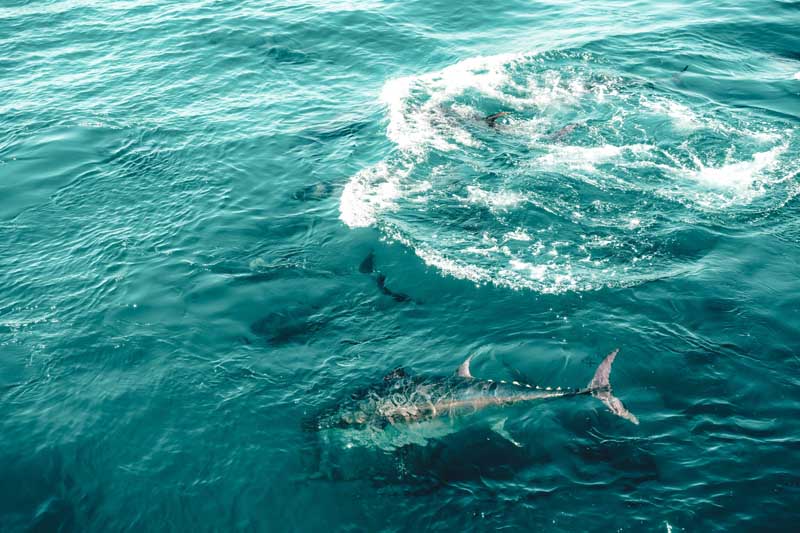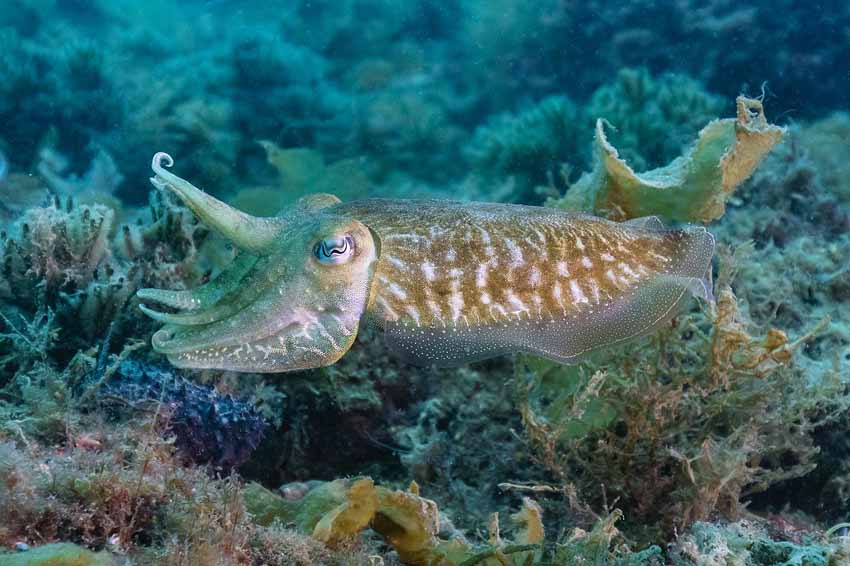A comprehensive genetic study reveals unprecedented relevant data for bluefin tuna future conservation
Últimas noticias
An LGTBIQ+ perspective on the animal kingdom
Una mirada LGTBIQ+ al reino animal
Circular Economy in Action: Valorisation of By-products through Projects like PRIMA NEWFEED
- The AZTI Technology Centre has analysed the DNA of more than 500 Atlantic bluefin tunas from the three known spawning grounds.
- This is the first genetic study to include the new spawning ground discovered in 2016 in the northeast coast of the United States, allowing to study connectivity of this area with the previously known Gulf of Mexico and Mediterranean spawning grounds.
- The initiative was funded by the Basque Government and the International Commission for the Conservation of Atlantic Tunas (ICCAT).
- The results of the study have been published in the prestigious journal Molecular Ecology, https://doi.org/10.1111/mec.17188
Sukarrieta, 12th of December 2023 – Conservation efforts for bluefin tuna, a resource of high market value, have led to a more optimistic and hopeful future for the species. Nevertheless, additional knowledge on the biology of this iconic species remains essential to establish efficient and sustainable management plans that anticipate possible changes in abundance and/or distribution.
In this context, the AZTI Technological Centre, specialised in marine and food research, has led a genetic study with more than 500 individuals from the main spawning grounds of Atlantic bluefin tuna. The aim of the study, the results of which have just been published in the prestigious journal Molecular Ecology, was to determine the number of genetically distinguishable bluefin tuna populations and their connectivity, including, for the first time, a third spawning ground discovered in 2016 in the north-east of the United States.
“For all these years, we have assumed that bluefin tuna, despite their ability to make large migrations within the Atlantic Ocean, remain loyal to spawning at the same area where they were born. However, spawning activity has recently been detected in an area off the northeastern coast of the United States that had not been included in previous genetic studies and whose origin was unknown,” says Natalia Díaz-Arce, a fisheries genetics researcher at AZTI.
This was therefore the first genetic analysis of Atlantic bluefin tuna to include all known spawning grounds, with the challenge of determining the origin of individuals spawning in the northeastern United States and updating information on fish stocks.

Genetic homogenisation of Atlantic bluefin tuna
The study showed that the spawning area off the northeast coast of the United States is used by tuna from the Mediterranean and the Gulf of Mexico. In addition, for the first time, adults of Mediterranean origin were observed spawning in the Gulf of Mexico. The research also identified traces of the albacore tuna genome in the genome of Mediterranean bluefin tuna, suggesting an ancient hybridisation between the two species.
“Just as humans have a small percentage of Neanderthal DNA, the Mediterranean bluefin tuna also carries in its genome a genetic footprint of a closely related species, the albacore tuna,” explains Díaz-Arce. The individuals from the third spawning area analysed by the AZTI team show intermediate genetic characteristics and also carry these traces of albacore tuna.
“These findings shows that what were thought to be two reproductively isolated populations (those that spawn in the Mediterranean and the Gulf of Mexico, respectively), although they tend to return to the area where they were born, are not only demographically connected, but they also mix in the spawning ground at the northeastern United States” she stresses.
These results provide essential information on the connectivity of bluefin tuna populations, which can be used to develop management strategies that ensure exploitation and conservation of the species. In addition, the discovery of the connectivity of the Mediterranean with the other two spawning areas could have future implications, such as the genetic homogenisation of all bluefin tuna worldwide and an impact on the resilience of bluefin tuna to environmental changes.
The project, which will be completed in 2023, has received funding from the Basque Government through the GENGES project and support for the training of research and technology personnel, as well as from the International Commission for the Conservation of Atlantic Tunas (ICCAT), which is responsible for the management of Atlantic bluefin tuna, through its “Atlantic-Wide Research Programme for Bluefin Tuna” (GBYP).
- Díaz-Arce, N., Gagnaire, P.-A., Richardson, D. E., Walter, J. F., Arnaud-Haond, S., Fromentin, J.-M., Brophy, D., Lutcavage, M., Addis, P., Alemany, F., Allman, R., Deguara, S., Fraile, I., Goñi, N., Hanke, A. R., Karakulak, F. S., Pacicco, A., Quattro, J. M., Rooker, J. R., Arrizabalaga, H and Rodríguez-Ezpeleta, N. (2023). Unidirectional trans-Atlantic gene flow and a mixed spawning area shape the genetic connectivity of Atlantic bluefin tuna. Molecular Ecology, 00, 1–18. https://doi.org/10.1111/mec.17188
NOAA fisheries also described the results in a press release







